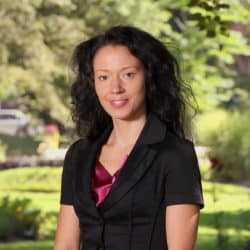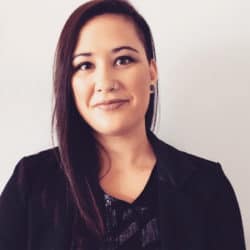This Q&A is part of a series of interviews with six PhiLab researchers about their areas of study.
This Q&A is part of a series of interviews with six PhiLab researchers about their areas of study. PhiLab is a Canadian research network on philanthropy based in Montreal, on the campus of UQAM.
***
April Lindgren, professor and Velma Rogers Graham Research Chair, School of Journalism, Ryerson University (research in progress)
You covered economics and politics on Parliament Hill in Ottawa for 20 years before turning to teaching and research. What was your first area of research?
I looked at the role of ethnic media in the lives of newcomers to Canada. I studied how the media was helping these citizens adapt to their new lives.
What lessons did you carry from your life as a journalist into your life as a researcher?
Like a journalist, a researcher is interested in what’s going on. I am drawn to contemporary issues that cannot be ignored.
Your research work focuses on local journalism. Can you explain this choice?
When journalists are starting out, we all want to cover foreign affairs. Over time, we realize that all the foreign topics and issues are also topics and issues in our own backyard.
In 2016, you launched the Local News Research Project. What is it about?
It’s a map that lists all the local Canadian media outlets (radio, TV, print, and digital) that have closed, opened, or hired or laid off staff since the 2008 financial crisis. The map is updated every two months. What we found was that three times as many local Canadian media outlets have closed as new ones have opened.
Your current research looks at foundations that fund media. Why should the philanthropic sector be coming to the rescue of the media?
Actually, it’s not about saving the media; it’s about supporting communities. This is the fundamental mission of all foundations. Media is an essential part of the infrastructure all citizens need, like hospitals and roads are. Ensuring that a community receives independent, validated information in real time actually increases the ability of foundations to make an impact through their investments.
Can you explain how the presence of independent media in a community improves the reach of foundations?
Take, for example, a foundation that is involved in the health sector. The presence of independent local media contributes to the accountability and transparency of hospital management. By ensuring that independent media cover the communities where the foundation makes investments, a foundation strengthens the impact of those investments, whether they are in health, education, or employment.
How is your project organized?
We started by completing a literature review. We identified reports from the Tow Center at Columbia University, the Shorenstein Center at Harvard University, and the American Press Institute on philanthropic funding to the media, among others. We then met with foundations that have funded media outlets, and with the media outlets that have received such funding, both in the United States and Canada.
The Atkinson Foundation in Toronto is a Canadian pioneer in “philanthrojournalism.” Tell us about its collaboration with the Toronto Star.
In 2014, the Atkinson Foundation started funding the position of Toronto Star journalist Sara Mojtehedzadeh. This media outlet had not been covering transformations in the workplace on a regular basis before that. Sara Mojtehedzadeh now covers these issues at the Toronto Star.
What motivated this foundation to fund a journalist’s salary?
The Atkinson Foundation funds initiatives that aim to reduce inequalities. Transformations in the workplace, including things like automation and digitization, play a significant role in creating inequalities. The foundation’s leadership felt that regular and rigorous coverage of these issues by a media outlet would strengthen its work. Sara Mojtehedzadeh has covered, among other things, the struggle of Foodora’s couriers to unionize. This struggle is highly representative of current transformations in the workplace, where the platform economy has created a new category of precarious workers, like delivery workers.
Your research identifies a dozen possible funding models for philanthrojournalism. In addition to the one chosen by the Atkinson Foundation for the Toronto Star, can you name others?
Certainly. First, a foundation can support a specific journalistic project, such as a story on child welfare in an Indigenous community. It can also fund resources that will be shared by several media outlets, such as legal advice for journalists, support for the launch of an NPO structure, et cetera. A foundation could contribute to the training and development of journalists or support collaborative projects between different media. For example, to better ensure accountability of public authorities, The Seattle Times receives philanthropic support to carry out investigative journalism. A foundation can fund freelance journalism or academic research activities such as Concordia University’s Research Chair in Investigative Journalism. It can also help media outlets adopt a new business model. The Lenfest Institute in Philadelphia, for example, provides this type of funding through the Local News Business Model Challenge. Finally, a foundation can fund the operating expenses of media outlets, outright. This is what the MacArthur Foundation did in 2016 when it awarded US$25 million in funds – with no restrictions on how they would be used – to 12 different media outlets. It may be more exciting to fund investigations and big stories, but media outlets also need to cover their fixed costs.
All foundations want to be able to demonstrate the impact of their work. But how can one measure the impact of projects about issues like municipal democracy or child abuse?
That’s a challenge. How do you know if a politician has resigned or a law has been changed because of a specific article that was published? First, it’s hard to track the impact of journalistic work. Second, that impact rarely happens instantaneously. And then, for small newsrooms, measuring impact can be a cumbersome project. So, it’s important to start by identifying what impact measurements are realistic, and then to make sure the foundation has dedicated funds for this.
What about freedom of the press? Isn’t there a risk that foundations will interfere in the content of media?
This discussion has already taken place with advertisers. The media have learned how to regulate their relationship with them in order to avoid interference. The real risk of influence that I sense is more subtle than that. Most of the content that foundations will fund did not exist before they were funded. This suggests that unfunded subjects will continue to receive less coverage.

